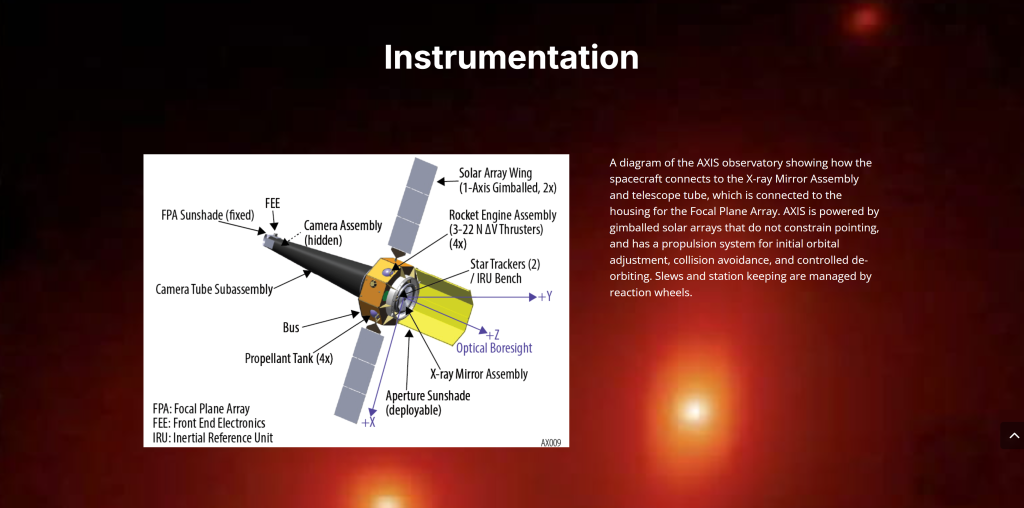NASA chooses McGill-linked AXIS mission as finalist for 2026 explorers program

Posted December 15, 2024 3:23 pm.
Last Updated December 15, 2024 6:10 pm.
NASA has made its final two selections for its longstanding Explorers Program, which gives two teams of scientists the chance to advance their technology with $5 million in funding for the next year.
Then in 2026, NASA will make their final decision as to which mission will have the chance to proceed with construction, for a launch in 2032.
AXIS — the Advanced X-ray Imaging Satellite — a McGill-linked mission that uses sharp X-ray eyes to probe far into the universe, has been chosen as one of the two finalists.

“We all came together around new technology being developed by one of our main instrument scientists to try to make a next-generation X-ray observatory. We do have observatories right now, in particular, the Chandra X-ray observatory is in space taking observations and so this is intended to be kind of its successor, the next thing that comes along and really helps push our field forward,” explained Daryl Haggard, a physics professor at McGill University.
AXIS — the powerful X-ray satellite with an increased field of view — is meant to follow the legacy of NASA’s X-ray space telescope Chandra, which has been in space since 1999.

“It’s going to allow us to probe into more of the, into the more distant universe, but also to find a lot of stars, young stars, dead stars, exploding stars, colliding stars, much, much better. So it’s going to be about 10 times more sensitive than the current Chandra X-ray mission,” said Samar Safi-Harb, a physics professor at the University of Manitoba.
The X-ray probe developed by the AXIS team which uses lightweight mirrors, is best for studying exploding flaring or dying stars deep in the universe.
“X-ray light probes something that’s extremely hot, hot gas, like that glowing gas in the supernova remnant Cassiopeia A. It’s glowing at millions of degrees. Or even higher temperatures. Okay, so it’s very hot gas,” said Safi-Harb.
“And the reason we have hot gas is because we have these powerful explosions heating everything around them to extremely high temperatures. So they shine in x rates, right? So if we didn’t have x ray. Telescopes are sensitive to extra lights. We wouldn’t be able to detect them.”



What’s most exciting about this year’s final selections by NASA is that they both have Canadian involvement, with the AXIS team being led by both Professor Haggard and Professor Safi-Harb.
“I think it’s interesting to say that, I think there’s two of us, basically Daryl and myself, leading the Canadian participation in this very large collaboration. So that’s really, I mean, we feel both excited and privileged to be in that position. And we’re, of course, very thrilled that it got selected, which is great news for us also in Canada,” said Saif-Harb.
Haggard adding, “This funding we have just put out a call to bring in more of the community and there are now hundreds like it was hugely popular so we now have you know working groups that are 300 people big and my guess is that those scientists are kind of they lean toward the younger generation so probably hundreds of trainees are now working together with us on the project.”








